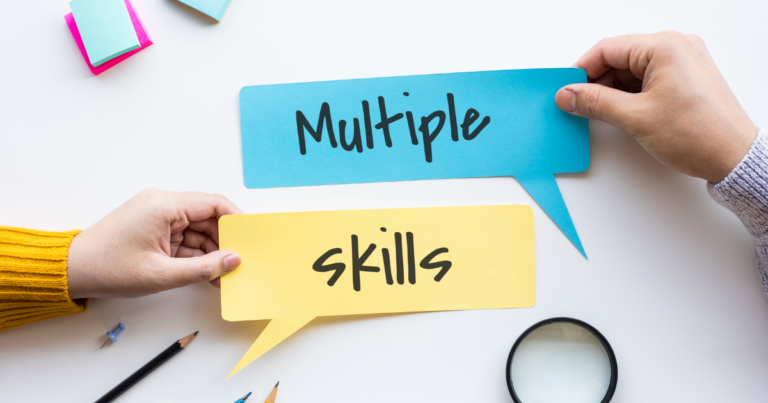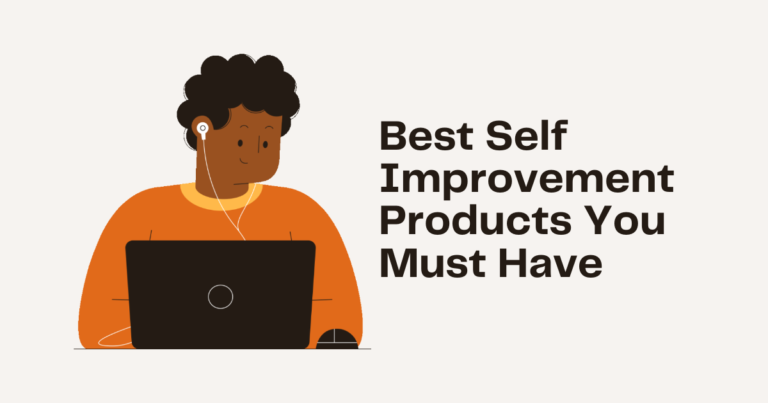How to Build Emotional Resilience in today’s Uncertain World
Life today can feel like a nonstop rollercoaster—fast, unpredictable, and overwhelming. From global issues like climate change and economic stress to personal struggles like job loss or burnout, it’s easy to feel anxious and exhausted. But here’s the good news: emotional resilience is a skill you can build over time. Think of it as mental strength training that helps you bounce back, adapt, and keep moving forward.
In a world full of uncertainty, emotional resilience becomes your inner anchor. We may not be able to control what happens next, but we can learn to handle life’s challenges with more strength, calm, and confidence.
Table of Contents
Understanding Emotional Resilience

What Is Emotional Resilience?
Emotional resilience means being able to recover and keep going when life gets tough. It’s your skill to handle setbacks, adjust to changes, and face challenges without giving up. It doesn’t mean you never feel sad or upset — it means you can bounce back, learn from difficult moments, and become stronger over time.
Myths About Mental Toughness
Many people think being emotionally strong means never showing feelings like sadness or stress. That’s not true. Real resilience is about recognizing your emotions, allowing yourself to feel them, and then finding ways to move forward. It’s not about being hard or unbreakable, but about being honest with yourself and flexible in tough times.
Core Elements of Resilience
Self-Awareness and Acceptance
You can’t change your feelings if you don’t notice them. The first step to handling emotions is being honest with yourself about what you’re feeling, without judging or criticizing yourself. Accepting your emotions helps you understand and manage them better.
Emotional Regulation
It’s normal to feel anger, anxiety, or sadness sometimes. What matters is how you deal with those feelings. Techniques like taking deep breaths, pausing before reacting, and focusing on the present moment can help you stay calm and in control.
Adaptability and Flexibility
Being too rigid in your thinking makes it harder to cope with life’s changes. When you stay open-minded and flexible, you can handle surprises and challenges more easily. A flexible mindset is key to bouncing back stronger.
Developing Daily Habits for Resilience

The Role of Routine in Stability
Having a daily routine gives your day structure when things around you feel chaotic. Even small habits, like enjoying a morning cup of tea or writing in a journal before bed, can help ground you and create a sense of calm and control.
Journaling and Mindfulness
Writing down your thoughts lets you understand and process your feelings better. Mindfulness teaches you to focus on the present moment, helping you avoid getting stuck in worries about the past or future.
Practicing Gratitude Regularly
Gratitude helps shift your attention from what you don’t have to what you do. Taking time each day to appreciate the good things, big or small, can boost your mood and build emotional strength.
Strengthening Mental Fitness
Challenge Negative Thoughts
Our brains are built to spot danger first, not happiness. That’s why negative thoughts often take over. But you can change this by noticing those thoughts and choosing to replace them with positive or realistic ones. This helps you feel more in control and less stuck.
Learn Problem-Solving Skills
Problems can feel huge and scary when you don’t know where to start. Try breaking big problems into smaller, easier steps. Then, focus on solving one step at a time. This makes challenges feel less overwhelming and more manageable.
Build a Growth Mindset
A fixed mindset says, “I can’t do this.” A growth mindset says, “I can’t do this yet.” Adding “yet” reminds you that with time and effort, you can learn and improve. This small change helps you stay hopeful and keep trying.
Building Strong Relationships

The Power of a Support Network
You don’t need a big group—just a few trusted people who listen and understand without judging. Talking about your struggles can ease the emotional burden and help you feel less alone.
Healthy Communication and Boundaries
Strong resilience grows from honest and open relationships. Be clear about what you need and don’t hesitate to say no when something doesn’t feel right. Setting boundaries protects your well-being and helps maintain balance.
Physical Health and Emotional Strength
Exercise, Nutrition, and Sleep
Your mind works best when your body is well cared for. Eating healthy, staying active, and getting enough sleep help you handle stress better and bounce back from tough times.
How the Body Affects the Mind
Simple things like taking a walk, stretching, or getting fresh air can boost your mood. When your body feels good, your mind feels stronger too. Physical health plays a big role in building emotional resilience.
Navigating Climate Anxiety

Understanding Eco-Anxiety
If you feel worried or overwhelmed about climate change and the state of the environment, you’re not alone. This feeling is called eco-anxiety—and it’s a natural reaction to serious global challenges. It can show up as stress, sadness, helplessness, or even guilt about things like pollution, deforestation, or extreme weather. The important thing to know is that your concern means you care deeply—and that’s a powerful starting point.
Turning Worry into Action
While eco-anxiety can feel heavy, one of the best ways to cope is by taking small, meaningful steps. You can recycle more, reduce waste, support eco-friendly brands, or volunteer for environmental causes. Even talking to others and raising awareness helps. These actions not only help the planet, but they also give you a sense of purpose and control—turning fear into fuel for positive change.
Coping with Economic Uncertainty
Financial Stress and Emotional Wellbeing
Money problems can feel overwhelming because they affect our basic sense of security. When bills pile up or income feels uncertain, it’s normal to feel scared, anxious, or even ashamed. These emotions are valid—but it’s important not to let them take over. You’re not alone, and things can get better with small, steady steps.
Strategies to Stay Grounded During Financial Strain
Start by creating a simple, realistic budget that tracks what you earn and spend. Even tiny savings can go toward an emergency fund to ease future stress. Reach out to a financial advisor or explore free online tools to help manage debt or boost income. Most importantly, don’t suffer in silence—talking to someone you trust can bring relief and helpful perspective. Planning ahead gives you back a sense of control and can ease the emotional weight of financial strain.
Letting Go of Control

Control vs. Influence
There are some things in life—like the economy or global issues—that are simply out of our hands. You can’t stop them from happening, but you can choose how you react to them. Instead of feeling helpless, shift your focus to your actions, thoughts, and choices. That’s where your power really is.
Focus on What You Can Change
Trying to control things you can’t just wears you out. When you let go of what’s beyond your reach, it frees up your energy and attention. Use that energy to make small, positive changes in your daily life—like how you manage stress, treat others, or care for yourself. That’s where real progress begins.
The Role of Purpose and Meaning
How Purpose Fuels Resilience
Having a sense of purpose gives you something to hold onto during hard times. Whether it’s your family, helping others, a hobby you love, or a goal you’re working toward—it gives your life meaning. That meaning becomes your motivation to keep going, even when life gets tough.
Aligning Actions with Values
Living in a way that matches what you truly believe in makes you feel more balanced and secure. When your actions reflect your values, you build inner strength. This makes it easier to stay steady and strong when life doesn’t go as planned.
Practicing Self-Compassion
Being Kind to Yourself in Tough Times
Think about how you’d support a friend who’s going through something hard. You’d be gentle, encouraging, and patient. Now, try treating yourself the same way. Self-kindness isn’t weakness—it’s a powerful part of resilience. Being compassionate with yourself helps you heal and move forward faster.
Reframing Failure and Setbacks
Everyone faces failure, but it doesn’t define you. Instead of seeing it as the end, view it as a chance to grow. Ask yourself, “What can I learn from this?” Changing how you think about setbacks turns them into stepping stones, not stop signs.
Resilience Through Community
Helping Others Builds Inner Strength
When you help someone—whether it’s a kind word, lending a hand, or simply listening—you don’t just lift them up, you also strengthen yourself. Acts of kindness create a sense of purpose and connection, which builds emotional resilience over time.
Collective Coping and Group Healing
You’re not alone in your struggles. Being part of a group where people share similar experiences can be deeply healing. Whether it’s a support group, community event, or online forum, coming together reminds us that healing isn’t always a solo journey—it often happens best when shared.
Tools and Techniques
Therapy and Coaching
Talking to a therapist or coach can really help when you’re feeling overwhelmed. They give you support, teach you useful tools, and create a safe space where you can talk through your thoughts and feelings. It’s not about being “broken”—it’s about building strength with help from someone trained to guide you.
Mobile Apps and Guided Practices
If you’re not ready for therapy or want daily support, apps can be a great start. Tools like Calm, Headspace, and Insight Timer offer easy meditations, breathing exercises, and journaling prompts. They’re perfect for managing stress, boosting mindfulness, and building emotional resilience anytime, anywhere.
We can’t predict the future, but we can prepare ourselves to face it. Emotional resilience isn’t about being bulletproof—it’s about bending without breaking, feeling without getting stuck, and trusting that even in chaos, you’ve got the inner tools to rise. With daily habits, strong relationships, and self-compassion, you can build a mindset that not only survives—but thrives—in an uncertain world.
What are signs of emotional resilience?
Signs include being able to bounce back from stress, maintain a positive outlook, and adapt to changes without becoming overwhelmed.
Can resilience be learned or is it innate?
It’s definitely something you can learn. Like any skill, it takes practice and consistency.
How do I support someone else in building resilience?
Listen without judging, offer encouragement, and model healthy coping strategies. Sometimes just being there makes a huge difference.
Is avoiding the news a healthy coping strategy?
It can be, especially if news increases your anxiety. Consider limiting exposure and focusing on actionable, local solutions.
How long does it take to build resilience?
There’s no set timeline. Some changes happen quickly, while others take months. The key is to stay consistent and patient with yourself.







